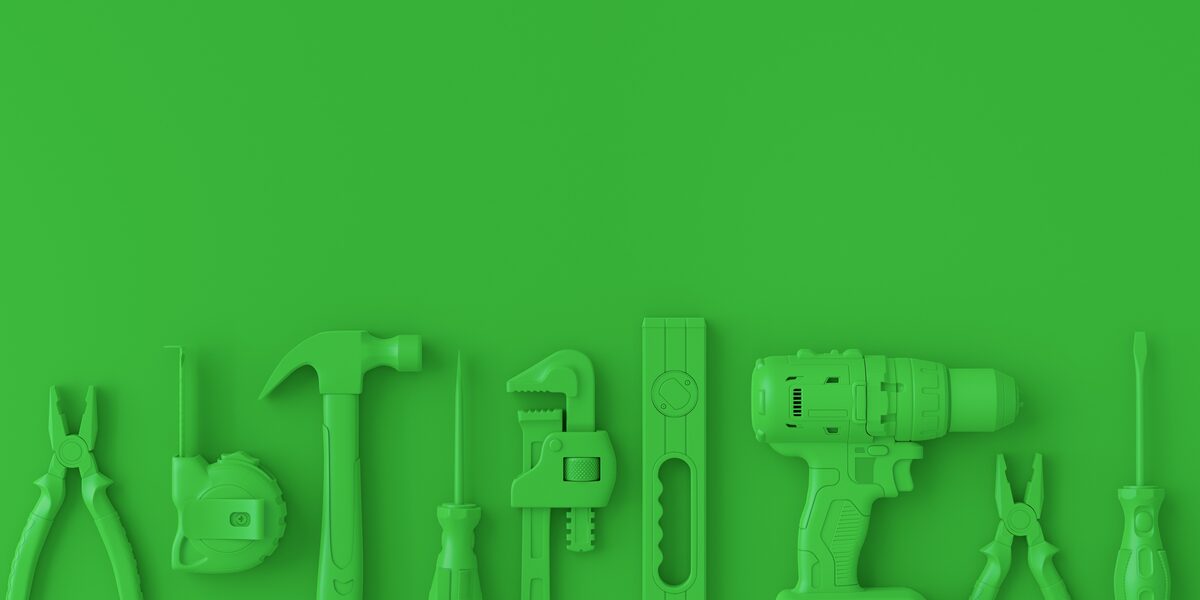Anyone who was a kid in the 90s or 2000s knows that feeling—firing up the PC or console and diving headfirst into a new adventure. Let’s imagine e-commerce is a game for a moment: it’s dark outside, you’re cozy in your pajamas, and the loading screen flickers to life. The credits roll, and the main menu appears:
👾SHOPIFY DROPSHIPPING 👾
Select Player
Like in any game, you probably wonder what skills your main character will need to level up and face the final boss. What skills do you need to build your Shopfify store?
Which areas should you master to sell successfully?
Don’t worry—this dropshiping guide will get you there. We’ll cross the mountains of suppliers, wander through the plains of selling channels, and eventually unlock the final level: success.
Ready? Hit START, and let’s go.
Learn the core dropshipping skills to launch and grow a Shopify store.
Master product research, store setup, and writing effective descriptions.
Use digital marketing tools like ads and influencer outreach to drive traffic.
Analyze reports to optimize your store and boost conversion rates.
Save time and scale smart with automation tools and virtual assistants.
Do You Need Technical Skills to Start Dropshipping?
Good news: you don’t have to.
If you thought building your dropshipping store on Shopify required coding skills and locking yourself in a room full of computers like Neo from The Matrix, watching blinking lines of code—luckily, you’re wrong. It’s way simpler than that!
You also don’t need to be a web or graphic design expert to create a functional, good-looking store that meets your market needs. Of course, you’ll need a few basic skills, but I’m 100% sure you either already have them or can learn them easily.
Just like video games have different modes, you can build your Shopify store in two main ways: manually or automatically. If you don’t have advanced experience with coding or design, you can always turn to platforms like Fiverr to hire professionals who’ll lend you a hand.
But if time is tight or your budget is limited early on, the automatic mode is your best bet. Remember those cheat codes you used to beat missions in games? Well, here’s one for you: some tools can build a store from scratch for you! One example is the Shopify Store Builder from AutoDS, which lets you launch a ready-to-sell store in just a few clicks.
What Skills Are Needed for Dropshipping Success?

Here’s where I put on my wise grandpa costume and tell you: the only way to get where we want is by taking one step after another. (Hopefully, you imagined that in an old wizard-y voice.)
Keeping with our nostalgic gamer metaphors, if we break dropshipping into levels we must beat to win the game, we needn’t just technical skills, but solid judgment for each stage.
So now we’ll split this adventure into three parts and break down exactly what our main character needs to overcome every challenge ahead.
Skills for Building Your Store
Platform Navigation
Knowing your way around Shopify is like learning to read the map in a game, without it, you’re walking blind. Mastering the dashboard and knowing how to install an app or change a theme are foundational skills that give you full control over your store without having to rely on anyone.
It’s the difference between having a pause menu and being stuck in survival mode 24/7. Luckily, Shopify dropshipping is super intuitive and practical. If you sit down with a coffee and start exploring it, you’ll know it like the back of your hand in no time.
Product Research
Here’s where strategy begins. It’s not about what you like; it’s about what people want to buy. And certain factors make people want to buy some products more than others:
- Price
- Trend factor
- Easy to ship
- Solves a problem
These are some of the traits of winning products; items that can boost your profit margins. So, how do you find them? There’s no single method or secret joystick combo. But here are a few great strategies to start with:
- Use Google Trends or similar tools: Google Trends shows you data on how popular a product is based on time, location, or audience. You can also find related products and rising searches to help make smarter decisions.
- Check out Best Seller Sections: Top eCommerce platforms like Amazon or AliExpress have best-selling product sections where you can track what’s in demand. Visiting them regularly helps you spot patterns and stay ahead of the game.
- Try AutoDS’ Hand-Picked Products Hub: This is like when Mario finds that star that makes him flash and move faster—AutoDS gives you a curated, constantly updated list of products that can boost your sales. Plus, it’s super easy to import them (and others) using automatic product importing.
🆕 Beginner’s Tip: You can test out these AutoDS tools (and many more) with our 14-day trial for just $1!
Basic Graphic Design
Don’t worry, there’s no need to be a Photoshop or Illustrator wizard. It’s more about having some visual and common sense. If you’re choosing between a high-quality product photo and a pixelated one and go with the pixelated one, my friend, maybe it’s time for an eye check!
Clean thumbnails, crisp photos, and a consistent aesthetic all scream, “this store is pro.” Think of it like game skins: they don’t affect gameplay but change how you’re perceived. Colors, fonts, logos, everything your customer sees reflects your brand values and builds recognition. So yes, form matters just as much as function.
Copywriting
A good product description doesn’t just inform, it sells. You might have the best-quality photo in the world, but if there’s no description underneath, it’s full of typos or doesn’t clearly explain the features, it’ll be tough to close that sale.
You’ve got to be clear, avoid writing a Bible-length text, but also don’t be too short. Over time, you’ll develop your own tone; how your brand “talks” to your audience—and that’s what builds trust.
And if you’d rather focus on other skills, you can always automate this step! With the AI Product Title & Description Generator, you can get high-converting product titles and descriptions tailored to your brand in just a few clicks.
Skills for Running a Dropshipping Business
Customer Service Skills
Consider customer service as your reputation meter in the game; it can rise or fall depending on how you handle every interaction. Responding quickly to inquiries, managing complaints patiently, and processing refunds smoothly are all keys to building trust and getting those 5-star reviews.
Even when a customer is demanding, your ability to stay calm and professional is what keeps your store alive and growing. Remember: good customer service doesn’t just solve problems, it creates loyal fans.
Order Fulfillment & Inventory Management
As a business model, dropshipping is pretty easy compared to more traditional setups, mostly because of its low risk and minimal upfront investment. But let’s be real: it still involves repetitive, routine tasks that can get boring quickly. Hey, even the most hardcore gamer has that one annoying mission they must push through.
Order fulfillment and inventory management are part of that grind, but they’re crucial. One mistake in the process can cost you a customer. You need to stay on top of every order from the moment someone clicks “add to cart” until the package hits their doorstep. The same goes for your inventory: you’ve got to manage your products (and maybe even multiple stores) as efficiently as possible.
And yep, this is where automation swoops in to save the day, like that friend who beats the boss level for you when you’re stuck.
Features like Inventory Management and Fulfilled by AutoDS are true game changers that keep things organized, smooth, and running like a well-oiled machine.
Understanding Supplier Platforms
Suppliers are your in-game allies. Whether you’re sourcing from AliExpress, CJdropshipping, or using AutoDS suppliers, knowing how to navigate each platform helps you make smarter decisions.
Some suppliers offer better shipping times, while others have more competitive prices or higher-quality listings. Understanding the strengths and quirks of each one lets you build a stronger, more reliable supply chain. The better you know your allies, the better you can plan your attack (aka, your product strategy).
Skills for Growing & Scaling
Digital Marketing
Digital marketing isn’t just about throwing money into ads. It’s about showing the right product to the right person at the right time. To do that, you need to know your audience, or at least have a clear, segmented idea of who you’re talking to. But don’t forget, you have a whole arsenal of tools and strategies to play in your favor. Here are some free tips, because I’m nice like that:
Create Genuine Content
If you want to stand out, do something different. Now, I’m not saying you need to put on an artistic performance every time you post a product—but you need to tap into what’s real. What do you like about the product? Highlight that!
I always recommend ordering samples before partnering with a supplier. Not only does this help you evaluate the supplier, but it also lets you hold the product in your hands and figure out what kind of content feels natural.
Both the algorithm and real people online love authentic, relatable content that triggers emotion. A product shown in everyday life has way more impact than a plain white background photo. You feel me?
Use Ads
This is the ace up your sleeve. Google, Facebook, Instagram and other platforms let you create campaigns and invest in them so your products reach the right people.
With advanced targeting options, you can fine-tune your aim until you find that audience that’s dying to buy what you’re selling. But heads up, it’s not about throwing cash at the screen and hoping for magic like it’s a slot machine. Ads need a little strategy, audience research, and good old trial and error. If it doesn’t work? Respawn and try again.
Leverage Influencer Marketing
Influencers give you a competitive edge. They’re like in-game allies who have the trust of tight-knit online communities.
For example, reaching out to a fashion influencer is a smart move if you’re selling fashion. They know the trends, speak the language, and can drive serious traffic to your store. They’re basically your in-game character with maxed-out Charisma.
Email Marketing & Personalization
Let’s be honest, we all like feeling special. So giving your customers that personalized experience gives you a real advantage.
What do I mean? Think: custom discounts based on what the customer likes, one-day-only promos or even automated email flows that share updates and highlight offers tailored to their behavior. A little personal touch goes a long way, and your customers will remember it.
Analytics & Optimization
Think of reports as your character’s stat sheet. They tell you how much life you’ve got left, if your armor’s working, or if it’s time to switch tactics. The same goes for your store.
Learning how to read your analytics, whether from Shopify, Google Analytics, Facebook Ads, or AutoDS—helps you understand what’s selling, what’s flopping, where customers are dropping off, and what needs fixing.
Conversion isn’t just about traffic. It’s about turning that traffic into buyers. Sometimes, all it takes is changing a product title, upgrading a photo, or tweaking your page layout to see results skyrocket. Optimization is like sharpening your sword before a big fight.
Time Management & Delegation
As your store grows, the game gets more complex. It’s no longer about moving fast, it’s about managing resources, like in any great strategy game. And your most precious resource? Time.
Knowing how to prioritize tasks, use automation tools, and delegate (like hiring a VA) is how you scale without burning out. It’s like unlocking a squad of NPCs that gather loot while you focus on taking down the boss.
Automating key processes, like order fulfillment, price updates, or package tracking, frees up mental space and time so you can start thinking like a real CEO.
Want to level up your business for real? Then, it’s time to stop doing everything and go full strategist mode. And yes, automation is our best friend at this stage!
How to Learn Dropshipping Skills Fast (Without Burning Out)

Alright, see? When we break everything down step by step, it doesn’t look so scary, right? Your Shopify dropshipping store is just around the corner.
But if reading the points above gave you a mini panic attack and triggered your inner neurotic thinking, “OH NO I HAVE SO MUCH TO LEARN AND SO LITTLE TIME,” relax. Sit down, I’ll make us some tea and tell you all the different ways you can level up your dropshipping skills as the main character in this adventure.
Learning to dropship doesn’t have to feel like an endless side quest. With the right tools and strategies, you can grow the skills needed for dropshipping without burning out or getting lost in a sea of contradictory tutorials. The secret is knowing where to look, leaning on your community, and not trying to master everything simultaneously. Let’s break it down:
Free vs. Paid Resources
In the world of learning, you’ve got two paths: the free route and the premium route.
The free route includes specialized YouTube channels, up-to-date blog articles, newsletters, and free webinars. Perfect for beginners who want to test the waters before making any investment. Sure, free content is more scattered, and no one’s organizing it for you, so it might take longer to connect the dots and figure out what’s useful, but trust me, there’s more than enough info online to become a dropshipping pro without spending a dime.
The paid path, structured courses and training, offers a more direct experience. Instead of hopping between random videos, you get a clear roadmap with actionable steps. If your time is valuable (spoiler: it totally is), this could be a game-changer. Especially if you want to fast-track your learning curve and dodge the kind of rookie mistakes that can cost you more in the long run.
Ideally, combine both. Soak up free content to get the lay of the land, and when you find a reliable source or mentor you trust, invest in a course to level up faster.
Community Support
You’re not alone in this, and you shouldn’t see everyone else as potential competition either.
In fact, one of the best ways to learn dropshipping skills quickly without burning out is to connect with others who are already in the game.
Facebook groups, Reddit communities like r/dropship, and even Discord servers are full of folks sharing real experiences, troubleshooting common problems, and spotting trends as they happen. And honestly, there’s no better way to learn than by seeing how others solve challenges similar to yours.
The best part? You can build a network, find collaborators, or even meet mentors who’ve already walked your path. A good mentor can save you weeks, or months, of trial and error. It’s like having a wise NPC guiding you to the next level.
Bonus Round: AutoDS Academy
If you want to boost your skills, don’t skip checking out AutoDS Academy. These are dropshipping workshops made by dropshippers for dropshippers. Learn everything you need to know to get your store up and running straight from real-world experience.
And I’m offended if you’re starting to think this article was just an excuse to sell you a course! Here’s the deal: you can access tons of FREE content, including the How to Start Dropshipping on Shopify in 2025 course and plenty more to round out your learning.
There is no catch—just fundamental tools to help you start smarter.
Frequently Asked Questions
What skills do you need for dropshipping?
To thrive in dropshipping, you’ll need a combination of abilities like product research, setting up your store (on platforms like Shopify), basic digital marketing, customer support, and understanding data. You don’t need to be super tech-savvy, but being open to learning new tools and adapting quickly is a big plus.
Do I need coding skills to start dropshipping on Shopify?
Not at all. Shopify is built for beginners, with drag-and-drop features that let you create a professional-looking store without writing a single line of code. On top of that, apps like AutoDS can handle things like product imports, price updates, and order fulfillment automatically.
Can I teach myself the skills for dropshipping?
Absolutely. There’s a ton of free content out there: YouTube videos, blog posts, online forums, and more. You can learn at your own pace, and many dropshipping tools also include tutorials or support to guide you along the way.
Which dropshipping skills should I focus on first?
Start with the basics: learn how to research winning products, build your store on Shopify, and write compelling product descriptions. These will get your store up and running. Once solid, you can dive into marketing, analytics, and automation to take your business to the next level.
Conclusion
Learning is always a good idea, no matter the topic. It’s not just about gaining knowledge on something specific, like Shopify dropshipping; it’s also about how the act of sitting down to truly understand something helps us grow as individuals. That personal growth can open more doors in both business and life.
And I’m not trying to get cheesy here, I genuinely recommend taking the time to absorb this stuff. Don’t just “copy and paste” what someone else says. Try to connect the dots yourself and develop your criteria, and you’ll become a better dropshipper and a better learner overall.
All the skills we covered are totally doable with a little time and motivation. For now, I’m signing off with the satisfaction of a well-done job. And hey, now that you’ve made it this far… don’t forget to save your progress!
Check out more helpful articles below:





















